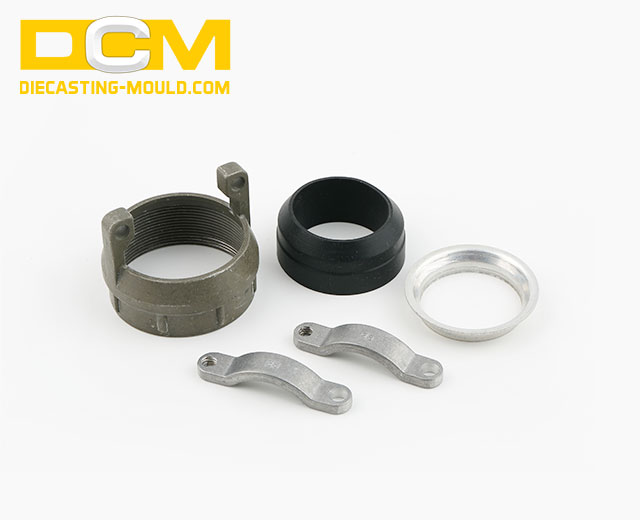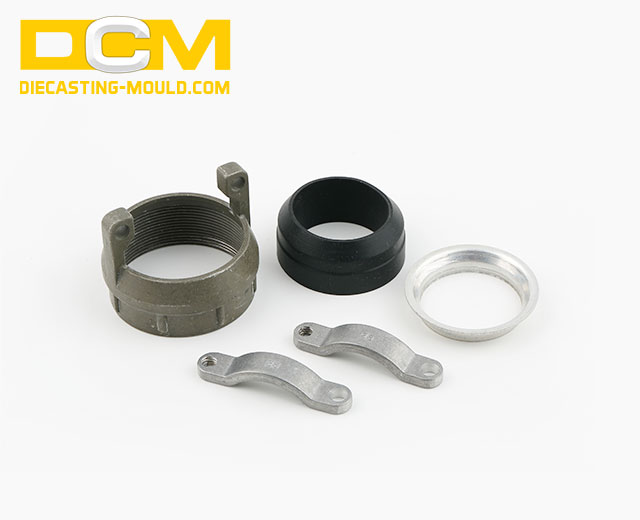When producing die-castings made of zinc alloy, new product development and updates zinc alloy die casting supplier to previously used molds are common occurrences that crop up during production. The temperature of the molten metal, the pressure of the die-casting process, the speed of the process, and the point at which the speed switches all play a role in determining the internal and external quality of zinc alloy die-casting parts. A number of factors, such as the structure of the zinc alloy die-casting part itself, the number of cavities in the mold, the design of the pouring system, and the type of gate, all have an effect on the molds that are used for zinc alloy die-casting.

Tests need to be run on zinc alloy die casting molds after they have been finished in order to inspect and address any problems that may have come up during the production of zinc alloy die casting molds, as well as to prevent defects in zinc alloy die cast parts that could have been caused by the design of zinc alloy die-casting molds. These tests are necessary in order to ensure the quality of the zinc alloy die cast parts and to prevent any defects that could have been caused by the design of zinc alloy die casting molds.It is essential to have the ability to guarantee that zinc alloy die casting molds can be produced in batches in a consistent and uninterrupted manner even if factors such as the materials, machine settings, or environment change. This is because it is necessary to be able to produce zinc alloy die casting molds in batches.Not only should you make an effort to obtain a few good trial mold samples, but you should also produce qualified products and make your zinc alloy die casting molds as adaptable as possible.1Do some research into the problems that are associated with die-casting molds made of zinc alloy.
At the factory that specializes in zinc alloy die-casting, the molds for zinc alloy die-casting are all designed with the same overarching objective in mind: to produce a zinc alloy die-casting mold that possesses a high degree of adaptability.The end result of this is the production of zinc alloy die-castings that do not conform to the specifications that are required.Trial production of molds for alloy die-casting cannot be carried out because it is not possible to do so.2Determine the conditions that lead to the best possible formation.
The personnel responsible for the mold trial can locate a set of the process data that is the most appropriate during the process of the mold trial.During the process of mass production, this collection of data may then be utilized as the default value for setting the parameters of the machine.In addition, the batch size of the zinc alloy die-casting mold can be modified based on the information contained in this collection of data.the process is being carried out under conditions that are perfect for production.3Confirm the design that was helped by CAE, and then improve the efficiency of the subsequent work.
The CAE analysis software is the end result of computer simulations and calculations that are based on the parameters of actual machines, the characteristics of actual alloys, and the actual conditions of the environment in which the machines are located.The analysis data can be directly input as a preset value during the actual machine mold trial, and the mold tester can use this to check and analyze the zinc alloy die-casting mold. During the actual machine mold trial.On the basis of the simulation results, zinc alloy die-casting mold designers are able to make corresponding adjustments to the mold design for zinc alloy die-casting.Is there something that could have been done differently with the way the mold for the die-casting was designed?In order to provide a foundation for the subsequent process parameter settings, it is possible to compare and analyze the flaws of the test module alongside the results of the simulation. This can be done in order to provide a foundation for the subsequent process.
2.1 Determine which procedures are necessary for the mold experiment.
One of the purposes of mold trial is to determine reasonable mold trial steps and make appropriate records for smooth future production, which is of great significance to future formal production. In addition, one of the purposes of mold trial is to determine reasonable mold trial steps.In addition, one of the goals of the mold test is to establish what are considered to be reasonable mold test steps.
2. In particular, it is of the utmost importance to keep in mind that the model of the die-casting machine that will be used for the mass production of the mold must match the model of the die-casting machine that will be used for the trial molding. This is because the trial molding must be an exact replica of the mass production mold.
3. Variables and settings within the trial mold process that can have an impact on the final product quality of zinc alloy die-castings
3.1 Guidelines for establishing a general framework zinc alloy die casting supplier for calculating the values of process parameters
When configuring the process parameters for the trial mold, the temperature of the zinc liquid, the injection speed, the pressure, and any other parameters should be set to their lowest possible values in order to safeguard the zinc alloy die-casting mold and the machine.This is correct so long as the zinc alloy die-casting parts can be qualified and fulfill the customer's specific technical requirements..
3. The aforementioned factors will have a significant impact on the accuracy with which the size of zinc alloy die-casting parts is determined. The process of die-casting also requires careful consideration in the selection of an appropriate coating.
The fast injection stroke can be calculated once the design of the zinc alloy die has been completed; in most cases, the calculated stroke and the actual stroke are not very different from one another. The position of the fast injection conversion can be determined in the following way: first, the injection end position is moved back a certain distance; second, a small amount of forward and backward adjustments are made according to the production conditions of zinc alloy die castings; and finally, the position of the fast injection conversion is determined. This is one way that the determination of the position of the fast injection conversion can be completed. During the mold trial process, when adjusting parameters, in most cases, only one parameter is adjusted at a time in order to differentiate the impact that a single parameter change has on the quality of zinc alloy die castings. This is done in order to determine which parameters have the greatest influence on the quality of zinc alloy die castings. This is done in order to ascertain which parameters have the greatest influence on the overall quality of the zinc alloy die castings that are produced.
Before using mold in any application, an actual inspection process called mold testing must first be carried out. Mold testing is also known as a mold trial. Base.
In order to find solutions for the numerous issues that arise while working with the trial mold, one must exercise patience and careful labor. In order to avoid racking up additional costs that are not necessary, you are not permitted to make any arbitrary adjustments to the zinc alloy die-casting mold. In conclusion, it is essential to emphasize that the purpose of the mold trial is to optimize the zinc alloy die casting mold and process in order to meet the requirements of mass production. This is in addition to testing out a few samples of zinc alloy die castings, which is also a part of the purpose of the mold trial. This ought to be the primary point of concentration during the mold test.



